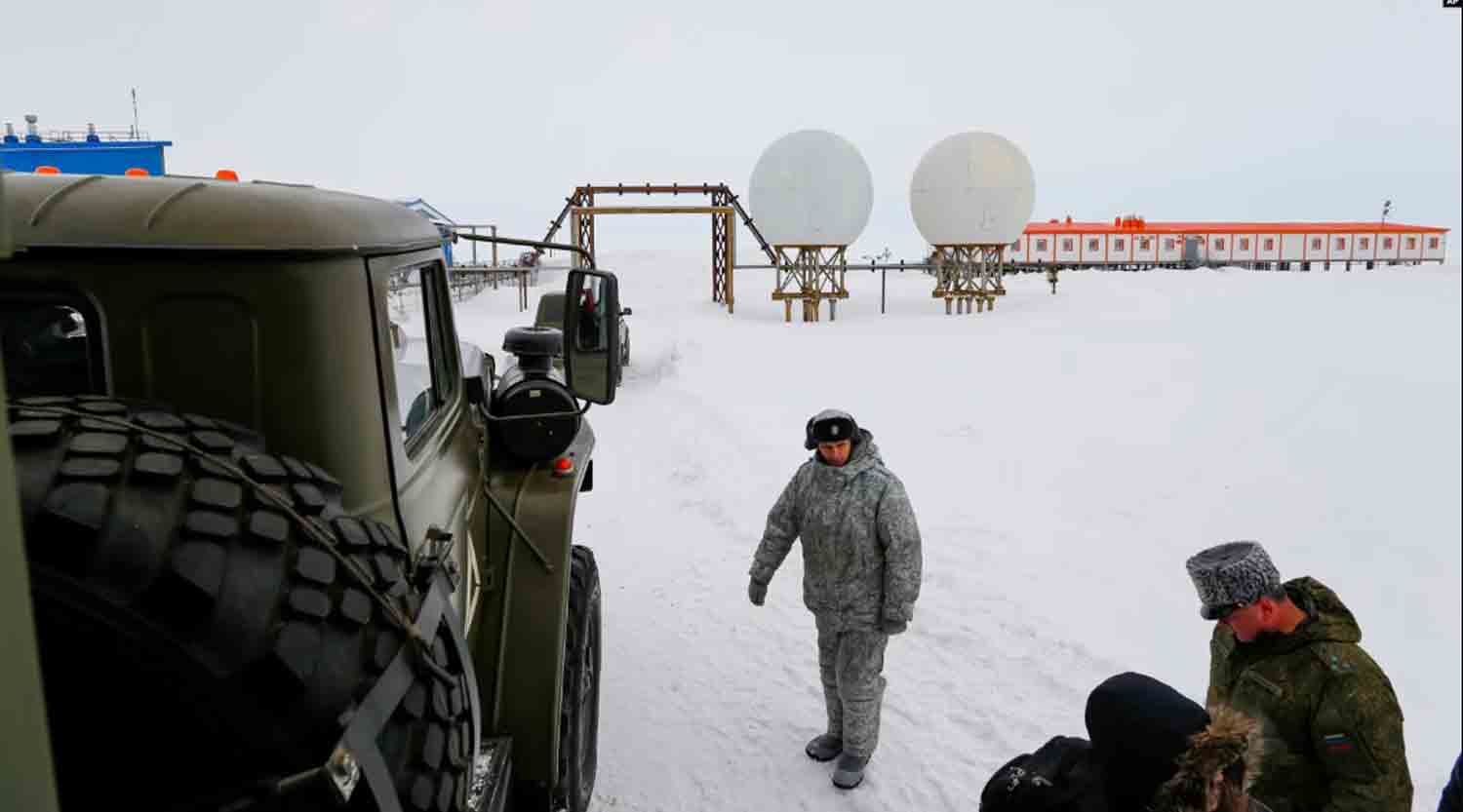A snowstorm fiercely flutters the flags of Denmark, Greenland, and the Faroe Islands above the Joint Arctic Command headquarters, which overlooks the harbor of Nuuk, the capital city of Greenland.
This small military installation, manned by approximately 80 personnel, is responsible for overseeing Danish security across the expansive Arctic territory, which spans around 2.1 million square kilometers.
While Greenland operates with a significant degree of autonomy, it remains a part of the Danish Kingdom, with Denmark holding the responsibility for its defense.
U.S. President Donald Trump has expressed a strong desire for the United States to take control of the island, indicating that he would not dismiss the possibility of employing economic or military measures to achieve this.
In remarks made shortly after his inauguration, Trump emphasized the necessity of U.S. oversight for “international security,” citing the presence of Russian and Chinese naval vessels in the region. He stated, “You have Russian boats all over the place. You have China boats all over the place, warships. And [Denmark] can’t maintain it.”
The strategic significance of Greenland has long been recognized by the United States, as noted by Marc Jacobsen, an analyst at the Royal Danish Defense College in Copenhagen.
“There’s no doubt that it’s geostrategically important in defending U.S. national security against Russian missiles,” Jacobsen explained to VOA. “The shortest route for Russian missiles towards the U.S. is via the North Pole, through Greenland.”
Russian missile
Russia has significantly expanded its military presence in the Arctic in recent years. The Nagurskoye air base, located on Siberia’s northern coast, is home to nuclear-capable strategic bombers, as well as missile and surveillance systems.
In addition, Russian nuclear submarines are actively patrolling the Arctic waters, and an increasing number of nuclear-powered icebreakers are enhancing the Kremlin’s influence in the region.
Joint military exercises have been conducted by China and Russia in the Arctic, with China also pursuing access to valuable mineral resources located beneath the ice.
“There is certainly a threat, particularly from Russian military capabilities in that area. NATO countries are currently working to bolster their own capacities,” stated Jon Rahbek-Clemmensen from the Royal Danish Defense College in an interview.
Denmark’s defense strategy
Denmark’s military assets in Greenland include four aging naval patrol vessels, a surveillance aircraft, and dog sled patrols.
Last month, Copenhagen revealed plans to invest in new surveillance drones, acquire two additional ships, and increase personnel, as well as upgrade an existing air base to support F-35 fighter jets. While the precise cost is still under consideration, the government has indicated it will allocate a “double-digit billion amount” in Danish kroner, equating to at least $1.5 billion.
Defense Minister Troels Lund Poulsen acknowledged that the government has not adequately invested in the security of Greenland.
“For many years, we have overlooked the essential investments needed in our naval and aerial capabilities to effectively monitor our territory, and we are now taking steps to address this,” he stated to reporters on January 9.
“We aim to develop an investment package that will enhance our capacity to oversee activities in the Arctic and introduce new capabilities.”
Denmark anticipates that these enhancements will assist in fulfilling “American requirements for increased surveillance of Greenland,” according to Jacobsen.
U.S. Military Presence
The U.S. military has maintained a presence in Greenland since World War II, when American troops were stationed on the island following Denmark’s occupation by Nazi Germany. At the peak of U.S. operations, Greenland was home to over 10,000 American service members.
The Pituffik Space Base, located on the northwest coast of Greenland and previously known as Thule Air Base, stands as the northernmost military installation of the United States. Currently, it accommodates approximately 200 military personnel and is equipped with missile warning, defense, and space surveillance systems.
According to Rahbek-Clemmensen, the military security of Greenland effectively depends on the United States. He raised a critical question regarding whether the U.S. intends to bolster its presence, potentially enabling a broader range of military operations in the region.
He noted that this context might explain why Danish officials are handling the situation in a way that preserves strong relations with the U.S.
“The Danish government has been attempting to address the concept of ‘control’ as mentioned by Trump, which is quite vague,” he remarked. “What does control entail? Is it about owning land, or does it refer to having a specific level of military assets stationed there?”
U.S.-Danish Relations
At the Arctic command center in Nuuk, the U.S. flag is displayed alongside those of Denmark, Greenland, and the Faroe Islands. This facility also houses the U.S. Consulate, indicating that, for now, the relationship between the U.S. and Denmark remains amicable.
Prior to Trump’s presidency, the U.S. Embassy in Copenhagen indicated that there were no intentions to increase the U.S. military footprint in Greenland.
However, this stance may shift with the new administration.
Currently, Denmark and its European partners are optimistic that Trump’s remarks are intended to encourage NATO allies to enhance their defense expenditures.
“His personality plays a significant role in shaping U.S. diplomacy, or rather, his approach to diplomacy,” Jacobsen noted.
“On a positive note, should the United States bolster its presence in the Arctic, it would also strengthen NATO’s presence, as the seven Arctic nations—excluding Russia—are all NATO members now.”
Discover more from Defence Talks | Defense News Hub, Military Updates, Security Insights
Subscribe to get the latest posts sent to your email.





